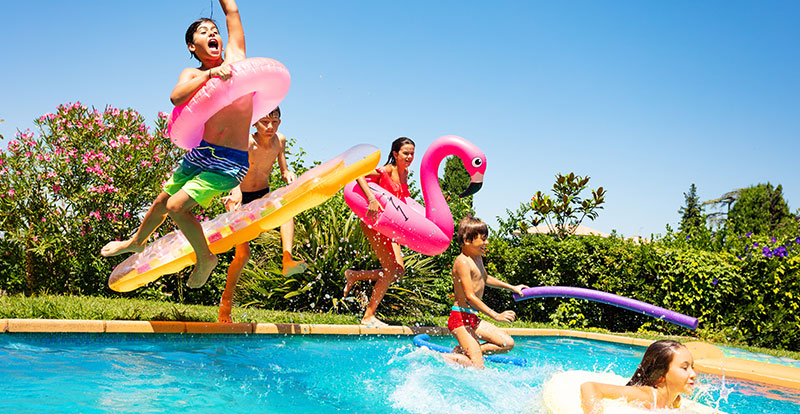Swimming Pool Safety

Each year, over 3,500 people in the United States die by drowning. Many more are injured in pool related accidents. National Safety Council statistics indicate that drowning rank third as the leading cause of accidental death, with children aged 1-10 most commonly involved. With these facts in mind, it is imperative that proper supervision and control be established at all swimming pools open to the public.
Listed below are the more important controls to be followed in an attempt to avoid swimming pool accidents:
- Swimming areas should be controlled. A 4’ high “child proof ” fence with a self-closing and self-locking gate is suggested as a minimum. The area should be kept locked during non-use hours. Natural or artificial barriers may be used as a substitute providing the area can be secured during hours the area is not open for swimming.
- Use of the pool should be controlled. Rules to be followed should be posted in a conspicuous manner and enforced.
- Walking surfaces in the swim area should be smooth, level, and slip resistant.
- The deep end of the pool (more than 5’) should be clearly marked either by a life line or a painted line contrasting with the pool bottom or both.
- The floor of the pool should be of a light color to easily identify objects in the pool.
- The depth of water, in feet, should be plainly marked above the water level on the vertical pool wall and on the coping or deck next to the pool.
- A throwing rope with attached life ring should be available in the pool area.
- Ground fault circuit interrupters should be provided on all electrical equipment operating at more than 15-volts installed below water level or within 20’ of pools.National Safety Council statistics indicate that drownings rank third as the leading cause of accidental death, with children aged 1-10 most commonly involved.
Sample Pool Rules
- This area is open for use during the hours of (time) to (time).
- Use at other hours is prohibited.
- For your protection, running jumping, and horseplay is not allowed.
- Glasses, bottles, and other objects that could injure others are not to be used in this area.
- All young children must be supervised by an adult.
- In an emergency, the nearest phone is located (add location).
- Emergency phone numbers:
- Ambulance: (number)
- Police: (number)
- Hospital: (number)
- Alcoholic beverages are prohibited in this area.NOTE: Violation of any of the above rules will result in immediate suspension of pool privileges.
Local ordinances/statutes and Minimum Standards for Public Swimming Pools (published by National Swimming Pool Institute) should be referred to for more complete details.

